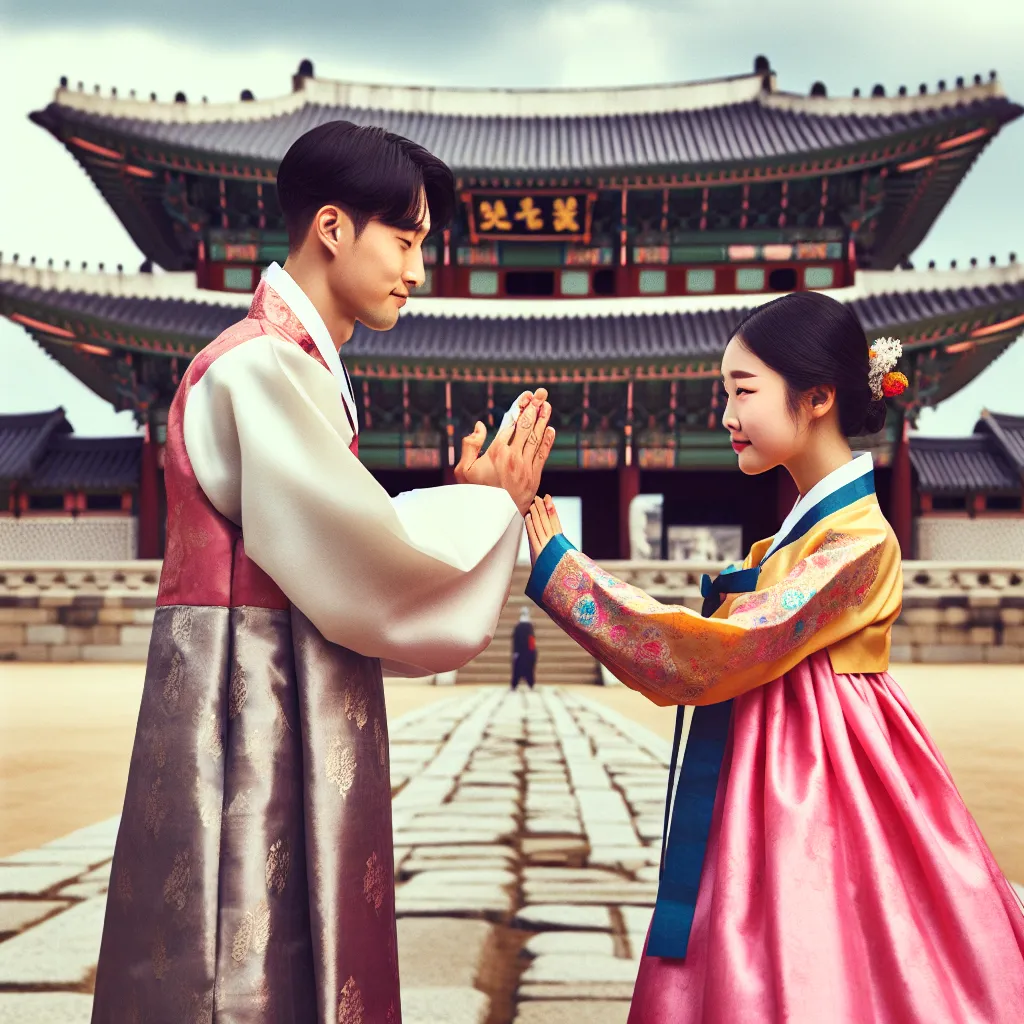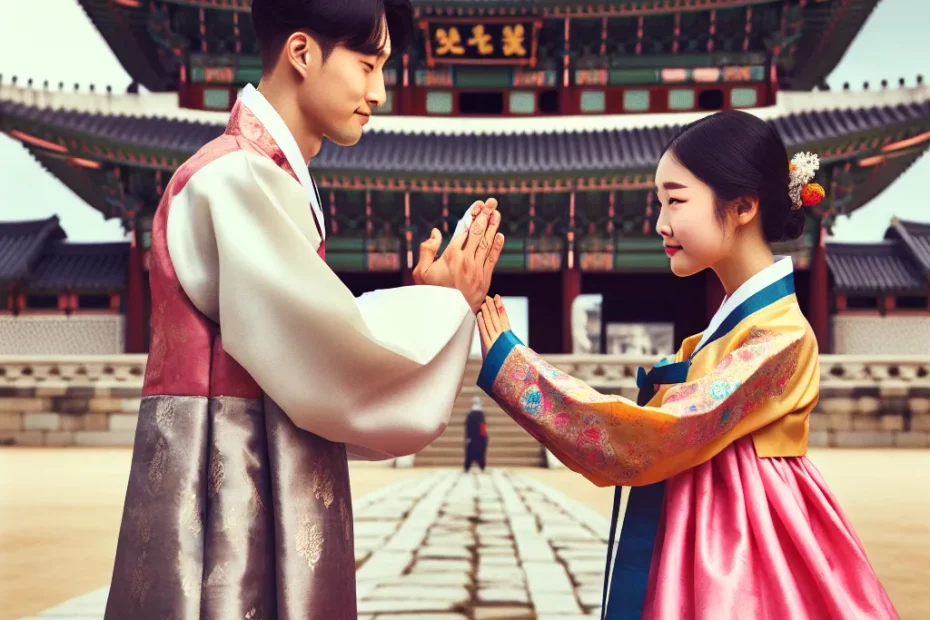Welcome to a journey of discovery into the rich tapestry of Korean culture and etiquette. As we delve into the historical influences, traditional customs, modern practices, and taboos of this fascinating society, we will uncover the essence of what makes Korea truly unique. From the deep-rooted Confucian values to the vibrant celebrations of life, every aspect of Korean culture offers a glimpse into a world of tradition and respect. Join me as we explore the intricacies of Korean etiquette, learning not just about the do’s and don’ts, but also gaining a deeper understanding of the values and beliefs that shape interactions in Korean society. Let’s embark on this enlightening journey together and discover the beauty of Korean culture and the importance of etiquette in this dynamic and evolving society.

Historical Influences on Korean Culture
Hey there! Today, let’s dive into the fascinating world of Korean culture and explore the historical influences that have shaped it into what it is today. From ancient times to modern-day, Korea’s rich history has played a significant role in molding its unique customs, traditions, and etiquette.
Confucianism in Korean Culture
Korean culture is deeply rooted in Confucianism, which emphasizes respect for hierarchy, filial piety, and the importance of social harmony. These values have been ingrained in Korean society for centuries and continue to influence the way people interact with each other in various settings.
Three Kingdoms Period
During the Three Kingdoms period, which lasted from the 1st century BC to the 7th century AD, Korea was divided into three separate kingdoms: Goguryeo, Baekje, and Silla. Each kingdom had its own distinct culture and traditions, which eventually merged to form the basis of modern Korean culture.
Joseon Dynasty
The Joseon Dynasty, which ruled Korea from the 14th to the 19th century, further solidified the influence of Confucianism on Korean society. The strict social hierarchy, elaborate rituals, and emphasis on education during this period continue to be reflected in Korean culture today.
Japanese Occupation and Korean War
In more recent history, the Japanese occupation of Korea from 1910 to 1945 had a lasting impact on Korean culture. The suppression of Korean language and traditions during this time fueled a sense of nationalism and pride in Korean identity, leading to a cultural revival after Korea regained independence.
The Korean War in the 1950s also played a significant role in shaping modern Korean culture. The division of the Korean peninsula into North and South Korea resulted in a unique blend of traditional Korean values and Western influences in the South, while the North developed its own distinct socialist culture.
Today, Korea is known for its vibrant pop culture, delicious cuisine, and cutting-edge technology. The historical influences of Confucianism, the Three Kingdoms period, the Joseon Dynasty, Japanese occupation, and the Korean War have all contributed to the rich tapestry of Korean culture that continues to captivate people around the world.
So, the next time you find yourself exploring Korean culture, take a moment to appreciate the historical influences that have shaped it into the dynamic and diverse tapestry that it is today! 🇰🇷🌟
Traditional Korean Customs
Welcome to the world of traditional Korean customs! 🇰🇷 In Korea, customs and etiquette play a significant role in daily life, reflecting the rich cultural heritage of the country. Let’s delve into some fascinating aspects of Korean customs that make this culture unique and captivating.
Respect for Elders
One of the most well-known customs in Korea is the deep respect for elders. 🧓👵 It is customary to bow to elders as a sign of respect, and the language used to address them is more formal and polite. This emphasis on respect for seniors is deeply ingrained in Korean society and is a beautiful reflection of the value placed on wisdom and experience.
Traditional Korean Bow
Another intriguing custom is the traditional Korean bow, known as “jeol.” 🙇♂️ Bowing is a common form of greeting in Korea, with different types of bows used for various occasions. The angle and depth of the bow convey the level of respect or formality in a given situation. It’s a graceful and meaningful gesture that symbolizes humility and sincerity.
Korean Dining Etiquette
Korean dining etiquette is also a fascinating aspect of the culture. 🍚 When dining in Korea, there are specific customs to follow, such as using both hands when receiving or giving something, never sticking chopsticks upright in a bowl of rice, and waiting for the eldest person to start eating before beginning your meal. These practices highlight the importance of harmony and consideration for others at the dining table.
Hanbok – Traditional Korean Attire
The concept of “hanbok,” the traditional Korean attire, is another captivating custom that showcases the beauty of Korean culture. 👘 Hanbok is characterized by vibrant colors and graceful lines, with different designs for different occasions and social statuses. Wearing hanbok is a way to connect with Korea’s cultural roots and express a sense of pride in its heritage.
Pyebaek – Traditional Korean Wedding Ceremony
In Korean weddings, the traditional ceremony known as “pyebaek” is a cherished custom that symbolizes the union of two families. 🎎 During the pyebaek, the newlyweds bow deeply to their parents and offer symbolic items as a gesture of gratitude and respect. It’s a heartwarming tradition that emphasizes the importance of family and unity in Korean society.
Korea’s traditional customs are not just rituals but a way of life that reflects the values of respect, harmony, and community. 🌸 By embracing these customs, Koreans honor their past, celebrate their present, and pave the way for a vibrant future filled with cultural richness and diversity.
Exploring the world of traditional Korean customs is like embarking on a journey through time, where each custom tells a story of heritage and identity. 🌟 Let’s continue to appreciate and preserve these customs that make Korean culture so unique and enchanting! 🌺
Modern Etiquette in Korea
Welcome to the fascinating world of modern etiquette in Korea! As you navigate through the vibrant culture of this East Asian country, understanding and respecting Korean etiquette is key to making a positive impression and building meaningful connections with the locals. Let’s delve into some important aspects of Korean etiquette that will help you navigate social interactions with grace and respect.
Bowing
Bowing: One of the most common forms of greeting in Korea is bowing. When meeting someone for the first time or showing respect, a slight bow with your head and shoulders is a polite gesture. The depth of the bow can vary depending on the age or status of the person you are greeting.
Removing Shoes
Removing Shoes: In Korean culture, it is customary to remove your shoes before entering someone’s home. This practice helps keep the living space clean and is a sign of respect towards the residents. Make sure to take off your shoes before stepping inside and follow the host’s lead.
Dining Etiquette
Dining Etiquette: Korean dining etiquette is steeped in tradition and respect. When dining with others, wait for the eldest or most senior person to start eating before you begin. It is also polite to use both hands when receiving or giving something to someone, such as passing dishes or pouring drinks.
Language and Politeness
Language and Politeness: The Korean language has different levels of formality, known as “jondaetmal.” It is important to use the appropriate level of speech based on the age and status of the person you are speaking to. Using honorifics and polite language shows respect and is greatly appreciated.
Gift Giving
Gift Giving: Gift giving is a common practice in Korea to show appreciation and respect. When presenting a gift, use both hands or support your right arm with your left hand as a sign of respect. Gifts are often exchanged on special occasions or when visiting someone’s home.
Personal Space
Personal Space: Koreans value personal space and tend to stand at an arm’s length apart during conversations. Avoid standing too close or touching someone without permission, as it may make the other person uncomfortable.
By embracing these modern etiquette practices in Korea, you will not only show respect for the local culture but also create positive and lasting impressions with the people you encounter. Enjoy your journey into the rich tapestry of Korean customs and traditions! 🌟
Taboos to Avoid in Korean Society
Hey there! Today, let’s dive into the fascinating world of Korean culture and etiquette. As you navigate through this vibrant society, it’s essential to be aware of certain taboos to avoid any unintentional misunderstandings or offense. Let’s explore some key points together!
Avoid Using Your Left Hand
First and foremost, one major taboo in Korean society is using your left hand for giving or receiving things. In Korean culture, the left hand is traditionally considered unclean, so it’s crucial to always use your right hand in all social interactions, whether it’s passing a gift or receiving change at a store. By being mindful of this cultural norm, you show respect for Korean customs and values.
Avoid Sticking Chopsticks Upright
Another important taboo to keep in mind is the act of sticking your chopsticks upright in a bowl of rice. This action resembles a ritual performed at funerals and is therefore considered extremely disrespectful and inauspicious in Korean culture. To show proper etiquette, always lay your chopsticks flat on the chopstick rest or on the side of your plate when not in use. This simple gesture demonstrates your understanding and appreciation of Korean dining customs.
Remove Shoes Before Entering
Furthermore, when visiting someone’s home in Korea, it’s customary to remove your shoes before entering. This practice helps maintain cleanliness and shows respect for the host’s living space. Additionally, when receiving or giving items, it’s polite to use both hands as a sign of courtesy and attentiveness. These small gestures go a long way in building positive relationships and demonstrating your understanding of Korean social norms.
Respect Age and Hierarchy
In Korean society, there is a strong emphasis on age and hierarchy. It is essential to address others using the appropriate titles based on their age and position. Failing to do so can be seen as disrespectful and may lead to misunderstandings. By showing proper respect towards elders and those in positions of authority, you not only adhere to Korean etiquette but also show your appreciation for the country’s cultural values.
As you engage with Korean culture and society, remember to be mindful of these taboos to ensure smooth and respectful interactions. By showing awareness and respect for Korean customs, you can navigate this vibrant society with ease and appreciation. Happy exploring! 🇰🇷✨
As we delve into the rich tapestry of Korean culture and etiquette, we uncover a world shaped by centuries of history and tradition. From the profound influence of Confucianism to the vibrant customs passed down through generations, Korea’s cultural landscape is a treasure trove of wisdom and beauty. By understanding and respecting these traditions, we not only gain insight into the essence of Korean society but also forge deeper connections with its people. In modern Korea, a blend of tradition and innovation defines social interactions, creating a unique harmony of old and new. However, it’s crucial to be mindful of taboos that may inadvertently cause offense. By embracing the nuances of Korean culture and etiquette, we open doors to authentic experiences and meaningful relationships. Let’s celebrate the richness of Korean heritage and continue to learn, appreciate, and grow together.
